 Carrabec High School
Carrabec High School
 Emily Avery, Hunter Avery, Cassidy Ayotte, Anthony Berube, Isaac Boucher, Annika Carey, Ashley Cates, Summer Cole, Jacob Copeland, Caitlin Crawford, Shay Cyrway, Caroline Decker, Dominic Falk, Olivia Fortier, Joshua Foss, Paige Giroux, Olivia Gonio, Ricky Gordon, Ariel Guinn, Olivia Hassell, David Houle, Cheyanne Howard, Madison Jaros, Lemuel Kimball, Dylan Leach, Riley Maheu, Scott Mason, Mabel Mouland, Mary-Jenna Oliver, Colby Paquette, Kira Parent, Roy Pierce, Jasmyne Pray, Elijah Quimby, Abby Richardson, Damon Rogers, Cheyenne Sirois, Jayme Stafford, Sydney Steward, Cheyeanne Stubbs, Brandi Thibodeau, Ebony Walls, Dalton Way, Skye Welch, Jesiah Wilcox-Quimby, and Cameron Wooster.
Emily Avery, Hunter Avery, Cassidy Ayotte, Anthony Berube, Isaac Boucher, Annika Carey, Ashley Cates, Summer Cole, Jacob Copeland, Caitlin Crawford, Shay Cyrway, Caroline Decker, Dominic Falk, Olivia Fortier, Joshua Foss, Paige Giroux, Olivia Gonio, Ricky Gordon, Ariel Guinn, Olivia Hassell, David Houle, Cheyanne Howard, Madison Jaros, Lemuel Kimball, Dylan Leach, Riley Maheu, Scott Mason, Mabel Mouland, Mary-Jenna Oliver, Colby Paquette, Kira Parent, Roy Pierce, Jasmyne Pray, Elijah Quimby, Abby Richardson, Damon Rogers, Cheyenne Sirois, Jayme Stafford, Sydney Steward, Cheyeanne Stubbs, Brandi Thibodeau, Ebony Walls, Dalton Way, Skye Welch, Jesiah Wilcox-Quimby, and Cameron Wooster.
Cony High School
 Alimira Abdullah, Zina Ahmad, Nada Al Hoshan, Mohammad Al Jendi, Peter Allen, Hadeel Alsaleh, Abdulmajeed Al-Tameemi, Dakota Andow, Marian Arthur, Ashleigh Audet, Alexander Audette, David Barley, Sebastian Barron, Federico Barzasi, Hannah Beeckel, Gage Bernstein, Katherine Boston, Jordan Brooke, Jillian Brown, Logan Butler, Gabriella Campbell, Kaaleb Carey, Tyler Carr, Alexis Carter, Haylee Casey, Salemn Chapman, Paige Coaty-Neff, Sarah Cook-Wheeler, Riley Coombe, Jillian Coull, Joshua Crocker, Kaylee Cushing, Calvin Dacus, Jasmine Daly, Dakota Dearborn, Kody Demerchant, Isaiah Dodge, Anthony Donnarumma, Emily Douglas, Molly Dutil, Thomas Farris-Chason, Chloe Fleck, Jasmine French, Evan Galego, Jada Genest, Ian Gervais, Isaac Gichel-Curtis, Leighton Gidney, Ian Gifford, Crystal Gilber, Elsie Gin, Ashton Glockler, Kiara Gonzalez-Rodriguez, Megan Greaton, Cecilia Guadalupi, Jessica Guerrette, Mouaoeih Halwah, Ian Harden, Linda Hodgkins, Wyeth Houle, Emily Houston, Justin Huntley, Nathaniel Ieng, Timothy Johnson, Stephen Labbe, Benjamin LaPierre, Sophia LaPointe, Adrian Larrabee, Ryan Lathe, Faith Leathers-Pouliot, Cameran Letendre, Aaron Lettre, Carly Lettre, Emma Levesque, Meredith Lewis, Willow Longeree, Caleb MacFarland, Roger Mackbach, Joshua Martin, Iain McCollett, Lucas McCormick, Simon McCormick, Caleb McDougal, Courtney McFarland, Audrey McLaughlin, Samantha Melland, Abigail Merrill, Kameron Michaud, Gerald Moody, Caroline Mosca, Josephine Nutakki, Collin Osborne, Ayanna Osman, Renee Ouellette, Micayla Paquette, Marissa Parker, Abigail Pelletier, Nhasino Phan, Jillian Pion, Storm Plummer, Myles Quirion, Shakeera Radel, Ashleigh Redmond, Miranda Reichard, Mickayla Rheimer, Madison Riggs, Nathan Rivera Ayala, Jordan Robertson, Alexander Robinson, Natalie Rohman, Hannah Rouleau, Rebecca Smart, Aidan Smith, Karittha Sopasiri, Nathan Surette, Christopher Taylor, Devon Thomas, Kaley Trask, Mallory Turgeon, James Van Doren-Wilson, Sabrinna Vawter, Atlantis Veilleux, Jessy Veilleux, Linelys Velazquez, Arianna Vinal, Yasmine Wadleigh, Isaac Wallace, Proscha Ware, Nicholas Waterhouse, Haley Weston, Julie White, Sophia Whitney, Zachary Whitney, Joshua Wroten, Ayden Wyman and Devin Young.
Alimira Abdullah, Zina Ahmad, Nada Al Hoshan, Mohammad Al Jendi, Peter Allen, Hadeel Alsaleh, Abdulmajeed Al-Tameemi, Dakota Andow, Marian Arthur, Ashleigh Audet, Alexander Audette, David Barley, Sebastian Barron, Federico Barzasi, Hannah Beeckel, Gage Bernstein, Katherine Boston, Jordan Brooke, Jillian Brown, Logan Butler, Gabriella Campbell, Kaaleb Carey, Tyler Carr, Alexis Carter, Haylee Casey, Salemn Chapman, Paige Coaty-Neff, Sarah Cook-Wheeler, Riley Coombe, Jillian Coull, Joshua Crocker, Kaylee Cushing, Calvin Dacus, Jasmine Daly, Dakota Dearborn, Kody Demerchant, Isaiah Dodge, Anthony Donnarumma, Emily Douglas, Molly Dutil, Thomas Farris-Chason, Chloe Fleck, Jasmine French, Evan Galego, Jada Genest, Ian Gervais, Isaac Gichel-Curtis, Leighton Gidney, Ian Gifford, Crystal Gilber, Elsie Gin, Ashton Glockler, Kiara Gonzalez-Rodriguez, Megan Greaton, Cecilia Guadalupi, Jessica Guerrette, Mouaoeih Halwah, Ian Harden, Linda Hodgkins, Wyeth Houle, Emily Houston, Justin Huntley, Nathaniel Ieng, Timothy Johnson, Stephen Labbe, Benjamin LaPierre, Sophia LaPointe, Adrian Larrabee, Ryan Lathe, Faith Leathers-Pouliot, Cameran Letendre, Aaron Lettre, Carly Lettre, Emma Levesque, Meredith Lewis, Willow Longeree, Caleb MacFarland, Roger Mackbach, Joshua Martin, Iain McCollett, Lucas McCormick, Simon McCormick, Caleb McDougal, Courtney McFarland, Audrey McLaughlin, Samantha Melland, Abigail Merrill, Kameron Michaud, Gerald Moody, Caroline Mosca, Josephine Nutakki, Collin Osborne, Ayanna Osman, Renee Ouellette, Micayla Paquette, Marissa Parker, Abigail Pelletier, Nhasino Phan, Jillian Pion, Storm Plummer, Myles Quirion, Shakeera Radel, Ashleigh Redmond, Miranda Reichard, Mickayla Rheimer, Madison Riggs, Nathan Rivera Ayala, Jordan Robertson, Alexander Robinson, Natalie Rohman, Hannah Rouleau, Rebecca Smart, Aidan Smith, Karittha Sopasiri, Nathan Surette, Christopher Taylor, Devon Thomas, Kaley Trask, Mallory Turgeon, James Van Doren-Wilson, Sabrinna Vawter, Atlantis Veilleux, Jessy Veilleux, Linelys Velazquez, Arianna Vinal, Yasmine Wadleigh, Isaac Wallace, Proscha Ware, Nicholas Waterhouse, Haley Weston, Julie White, Sophia Whitney, Zachary Whitney, Joshua Wroten, Ayden Wyman and Devin Young.
Erskine Academy
 Pedro Albarracin Nunez- Mera, Lucy Allen, Lucas Anderson, Jay Austin II, Alec Baker, Julia Basham, Derek Beaulieu, James Berto, Adam Bonenfant, Faith Bonnell, Zyashia Borrero, Ashlee Bossie, Yanic Boulet, Haley Breton, Alexander Buzzell, Kole-Tai Carlezon, Jacob Cater, David Chubbuck Jr, Bridget Connolly, Abigail Cordts, Samantha Couture, Summer Curran, Colby Cyr, Norah Davidson, Sean Decker, Dominic Denico, Lily DeRaps, Joshua Donahue II, Joshua Duggan, Michael Dusoe Jr, Dominick Dyer, Jacob Elsemore, Vincent Emery, Nathan Evans, Cheyann Field, Jasmine Fletcher, Jada Fredette, Mitchell Gamage, Alyssha Gil, Annika Gil, Lydia Gilman, Ella Giroux, Boe Glidden, Bryce Goff, Joshua Gower, Clara Grady, Tori Grasse, Ian Gundberg, Alyssa Hale, Emma Harvey, Nicholas Hayden, Jesse Hayes, Gage Henderson, Brayden Hill, Summer Hotham, Nicholas Howard, Julianna Hubbard, Ashley Huntley, Emily Jacques, Sarah Jarosz, Ricker Jean, Cameron Johnson, Colby Johnson, Kyle Jones, Luke Jordan, Zaria Kelly, Marisa Klemanski, Tristan Klemanski, Riley Kunesh, Brandon LaChance, Benjamin Lagasse, Benjamin Lavoie, Cole Leclerc, Eleena Lee, William Leeman, Desiree Leighton, Madison Leonard, Gabriel Lewis, Stephanie Libby, Jordan Linscott, Colby Loden, Sydney Lord, Brandon Loveland, Shawn Manning, William Mayberry II, Haymanot Maynard, Reece McGlew, Marissa McGraw, Lexigrace Melanson, Kaytie Millay, Grady Miller, Jakob Mills, Jamara Moore, Adalaide Morris, Krysta Morris, Nathaniel Mosher, Alecia Paradis, Joseph Peaslee Jr, Shelley Peaslee, Isaak Peavey, Chloe Peebles, Chandler Peele, Lyndsie Pelotte, Matthew Picher, Jareth Pierpont, Jasmine Plugge, Hunter Praul, Dalton Pushard, Miina Raag-Schmidt, Benjamin Reed, Hailei-Ann Reny, Jennifer Reny, Mitchel Reynolds, Andrew Robinson, Dominic Rodrigue, Michael Rogers, Katelyn Rollins, Alyssa Savage, Shawn Seigars, Serena Sepulvado, Santasia Sevigny, Nicholas Shelton, Danielle Shorey, Taylor Shute, Ryan Sidelinger, Alissa Sleeper, Kayla Sleeper, Dominic Smith, Samuel Smith, Lily Solorzano, Makenzi Strout, Matthew Stultz, James Sugden, Jacob Sutter, Audrey Swan, Nicole Taylor, Kobe Thomas, Courtney Tibbetts, Brandon Tibbs, Katelyn Tibbs, Kaitlyn Tims, Ashleigh Treannie, Hailee Turner, Cameron Tyler, Tanner Watson, Andrew Weymouth, Curtis Weymouth, Kayleigh Winam, Richard Winn, Wesley Wood and Amber Wysocki.
Pedro Albarracin Nunez- Mera, Lucy Allen, Lucas Anderson, Jay Austin II, Alec Baker, Julia Basham, Derek Beaulieu, James Berto, Adam Bonenfant, Faith Bonnell, Zyashia Borrero, Ashlee Bossie, Yanic Boulet, Haley Breton, Alexander Buzzell, Kole-Tai Carlezon, Jacob Cater, David Chubbuck Jr, Bridget Connolly, Abigail Cordts, Samantha Couture, Summer Curran, Colby Cyr, Norah Davidson, Sean Decker, Dominic Denico, Lily DeRaps, Joshua Donahue II, Joshua Duggan, Michael Dusoe Jr, Dominick Dyer, Jacob Elsemore, Vincent Emery, Nathan Evans, Cheyann Field, Jasmine Fletcher, Jada Fredette, Mitchell Gamage, Alyssha Gil, Annika Gil, Lydia Gilman, Ella Giroux, Boe Glidden, Bryce Goff, Joshua Gower, Clara Grady, Tori Grasse, Ian Gundberg, Alyssa Hale, Emma Harvey, Nicholas Hayden, Jesse Hayes, Gage Henderson, Brayden Hill, Summer Hotham, Nicholas Howard, Julianna Hubbard, Ashley Huntley, Emily Jacques, Sarah Jarosz, Ricker Jean, Cameron Johnson, Colby Johnson, Kyle Jones, Luke Jordan, Zaria Kelly, Marisa Klemanski, Tristan Klemanski, Riley Kunesh, Brandon LaChance, Benjamin Lagasse, Benjamin Lavoie, Cole Leclerc, Eleena Lee, William Leeman, Desiree Leighton, Madison Leonard, Gabriel Lewis, Stephanie Libby, Jordan Linscott, Colby Loden, Sydney Lord, Brandon Loveland, Shawn Manning, William Mayberry II, Haymanot Maynard, Reece McGlew, Marissa McGraw, Lexigrace Melanson, Kaytie Millay, Grady Miller, Jakob Mills, Jamara Moore, Adalaide Morris, Krysta Morris, Nathaniel Mosher, Alecia Paradis, Joseph Peaslee Jr, Shelley Peaslee, Isaak Peavey, Chloe Peebles, Chandler Peele, Lyndsie Pelotte, Matthew Picher, Jareth Pierpont, Jasmine Plugge, Hunter Praul, Dalton Pushard, Miina Raag-Schmidt, Benjamin Reed, Hailei-Ann Reny, Jennifer Reny, Mitchel Reynolds, Andrew Robinson, Dominic Rodrigue, Michael Rogers, Katelyn Rollins, Alyssa Savage, Shawn Seigars, Serena Sepulvado, Santasia Sevigny, Nicholas Shelton, Danielle Shorey, Taylor Shute, Ryan Sidelinger, Alissa Sleeper, Kayla Sleeper, Dominic Smith, Samuel Smith, Lily Solorzano, Makenzi Strout, Matthew Stultz, James Sugden, Jacob Sutter, Audrey Swan, Nicole Taylor, Kobe Thomas, Courtney Tibbetts, Brandon Tibbs, Katelyn Tibbs, Kaitlyn Tims, Ashleigh Treannie, Hailee Turner, Cameron Tyler, Tanner Watson, Andrew Weymouth, Curtis Weymouth, Kayleigh Winam, Richard Winn, Wesley Wood and Amber Wysocki.
Lawrence High School
 Ashley Allen, Mackenzie Allen, Raygen Alley, Colby Anderson, Alexis Armstrong, Riley Avery, Lindsay Bagley, Dakota Batchelder, Wyatt Belmont, Mathew Berry, Rilee Bessey, Brody Bickford, Nathan Bickford, Hannah Bilodeau, Hailey Bolduc, Tyler Bolduc, Alan Bourget, Colby Brann, Aaron Breton, Sydney Bridger, Eva Brisk, Lauren Buck, Brooke Butler, Ethan Caldwell, Kendra Campbell, Deleyni Carr, Madison Carrero, Journey Champagne, Abigail Charland, Alfred Cochrane, Ethan Cochrane, Samuel Coro, Evan Craig, Megan Curtis, Cody Dixon, Parker Doane, Dylan Donnell, Bryson Dostie, Dawson Drew, Victoria Dubay, Dylan Eldridge, Annabelle Emery, Abigail Fisher, Wyatt Fortin, Samantha Fuller, Victoria Fye, Kieara Garland, Skylah Grivois, Paige Hale, Tyler Hall, Harley Hamlin, Jacob Hamlin, Ricky Hamlion, Dylan Hardenburg, Alaina Haywood, Caitlin Hedman, Carson Jersey, Haley Hersey, Alaina Hood, Silvia Hoover, Sophia Hoover, Mackenzie Huard, Sumner Hubbard, Jeremiah Hunter, Kristin Jackson, Camron Jordan, Donovan Knapik, Miranda Lambert, Julie Lane, Kyle Languet, Storm Lavway, Nicholas Lawler, Allison Leary, Grace Leary, Tyler LeClair, Austin Leighton, Aubrey Levesque, Alexis Lewis, Erica Maillet, John Manzo, Cassandra Martin, Dylan Martin-Hachey, Joshua McFarland, Joseph McKinley, Kristin Morneau, Paul Morneau, Destiny Mulholland, Morgan Niles, Cassandra Noyes, Bailey Parlin, Jacob Patterson, Benjamin Pierce, Gabrielle Pierce, Isaac Plourde, Cheyenne Poulin, Benjamen Pressey, Brian Pressey, Kassey Pressey, Chase Quimby, Nathaniel Regalado, Brianna Rice, Mackenzie Roberts, Gain Robinson, Mary Robinson, Lydia Rogers, Hunter Roy, Michael Roy, Tucker Roy, Jacob Ryder, Emma Salisbury, Ranea Sapienza, Hailey Sargent, Colby Shorey, Isaish Shuman, Riley Sinclair, Breanna Sirois, Melaina Smith, Paul Southwick, Jayden Stephenson, Elsie Suttie, Jacob Suttie, David Thurlow, Abigail Towne, Lydia Townsend, Haley Trahan, Jacob Turlo, Cody Veilleux, Abbie Vigue, Kyle Walch, Amber Wescott, Savannah Weston, Liberty White, Emily Whitney, Haley Wilkie, Cassondra Wood and Gabriel York.
Ashley Allen, Mackenzie Allen, Raygen Alley, Colby Anderson, Alexis Armstrong, Riley Avery, Lindsay Bagley, Dakota Batchelder, Wyatt Belmont, Mathew Berry, Rilee Bessey, Brody Bickford, Nathan Bickford, Hannah Bilodeau, Hailey Bolduc, Tyler Bolduc, Alan Bourget, Colby Brann, Aaron Breton, Sydney Bridger, Eva Brisk, Lauren Buck, Brooke Butler, Ethan Caldwell, Kendra Campbell, Deleyni Carr, Madison Carrero, Journey Champagne, Abigail Charland, Alfred Cochrane, Ethan Cochrane, Samuel Coro, Evan Craig, Megan Curtis, Cody Dixon, Parker Doane, Dylan Donnell, Bryson Dostie, Dawson Drew, Victoria Dubay, Dylan Eldridge, Annabelle Emery, Abigail Fisher, Wyatt Fortin, Samantha Fuller, Victoria Fye, Kieara Garland, Skylah Grivois, Paige Hale, Tyler Hall, Harley Hamlin, Jacob Hamlin, Ricky Hamlion, Dylan Hardenburg, Alaina Haywood, Caitlin Hedman, Carson Jersey, Haley Hersey, Alaina Hood, Silvia Hoover, Sophia Hoover, Mackenzie Huard, Sumner Hubbard, Jeremiah Hunter, Kristin Jackson, Camron Jordan, Donovan Knapik, Miranda Lambert, Julie Lane, Kyle Languet, Storm Lavway, Nicholas Lawler, Allison Leary, Grace Leary, Tyler LeClair, Austin Leighton, Aubrey Levesque, Alexis Lewis, Erica Maillet, John Manzo, Cassandra Martin, Dylan Martin-Hachey, Joshua McFarland, Joseph McKinley, Kristin Morneau, Paul Morneau, Destiny Mulholland, Morgan Niles, Cassandra Noyes, Bailey Parlin, Jacob Patterson, Benjamin Pierce, Gabrielle Pierce, Isaac Plourde, Cheyenne Poulin, Benjamen Pressey, Brian Pressey, Kassey Pressey, Chase Quimby, Nathaniel Regalado, Brianna Rice, Mackenzie Roberts, Gain Robinson, Mary Robinson, Lydia Rogers, Hunter Roy, Michael Roy, Tucker Roy, Jacob Ryder, Emma Salisbury, Ranea Sapienza, Hailey Sargent, Colby Shorey, Isaish Shuman, Riley Sinclair, Breanna Sirois, Melaina Smith, Paul Southwick, Jayden Stephenson, Elsie Suttie, Jacob Suttie, David Thurlow, Abigail Towne, Lydia Townsend, Haley Trahan, Jacob Turlo, Cody Veilleux, Abbie Vigue, Kyle Walch, Amber Wescott, Savannah Weston, Liberty White, Emily Whitney, Haley Wilkie, Cassondra Wood and Gabriel York.
Madison Area Memorial High School
 Chance Allen, Katrina Barney, Shelby Belanger, Graham Briggs, Nevaeh Burnham, Reid Campbell, Autumn Cates, Olivia Clough, Aaron Corson, Caleb Cowan, Isaiah Cyr, Stacy Depoala, Dawson Eanes, Emily Edgerly, Todd Edgerly, Caden Franzose, Aliya French, Dakota Hall, Glen Harrington IV, Chandra Holt, Lauria LeBlanc, Grace Linkletter, Carolyn McGray, Riley Merrill, Cianan Morris, Aidan O’Donnell, Izaiah Perkins, Lucy Perkins, Luke Perkins, Isabella Petrey, Roger Picard, Roland Picard, Evelyn Pisch, Skyelar Pollis, LeiLani Rexford, Abigail Spaulding, Jared Tozier, Mikayla Violet and Daxton Winchester and Kathryn Worthen.
Chance Allen, Katrina Barney, Shelby Belanger, Graham Briggs, Nevaeh Burnham, Reid Campbell, Autumn Cates, Olivia Clough, Aaron Corson, Caleb Cowan, Isaiah Cyr, Stacy Depoala, Dawson Eanes, Emily Edgerly, Todd Edgerly, Caden Franzose, Aliya French, Dakota Hall, Glen Harrington IV, Chandra Holt, Lauria LeBlanc, Grace Linkletter, Carolyn McGray, Riley Merrill, Cianan Morris, Aidan O’Donnell, Izaiah Perkins, Lucy Perkins, Luke Perkins, Isabella Petrey, Roger Picard, Roland Picard, Evelyn Pisch, Skyelar Pollis, LeiLani Rexford, Abigail Spaulding, Jared Tozier, Mikayla Violet and Daxton Winchester and Kathryn Worthen.
Messalonskee High School
 Alyson Albert, Nicholas Alexander, Connor Alley, Ava Ardito, Austin Arsenault, Abigayle Barney, Jennessey B aylis, Madison Beaulieu, Austin Bedsaul, Sami Benayad, Brianne Benecke, Taylor Bernier, Lauren Bourque, Rebecca Bourque, Lydia Bradfield, Andrew Brann, Sydney Brenda, Alexa Brennan, Ethan Burton, Hannah Butler, Salvatore Caccamo, Kaiya Charles, Tucker Charles, Patrick Chisum, Sadie Colby, William Cole, Connor Collins, Emma Concaugh, Bradley Condon, Abitail Corbett, Anne Corbett, Breanna Corbin, Ainsley Corson, Shiela Corson, Hunter Cote, Cameron Croft, Emily Crowell, Hannah Cummins, Dylan Cunningham, Lydia D’Amico, Austin Damren, Zachary Davis, Cassidy Day, Hannah DelGiudice, Jordan Devine, Kristen Dexter, Emma Di-Girolamo, Zachary DiPietro, TaylorJefferey Doone, Cooper Doucette, Haley Dunn, Benjamin Edman, Cade Ennis, Connor Evans, Andrew Everett, Nicolas Fontaine, Lauren Fortin, Joseph Fougere, Brennan Francis, Alexis Furbush, Amelia Gallagher, Austin Garrett, Sydnie Gay, Sara Getchell, Molly Glueck, Joshua Goff, Martin Guarnieri, Juliana Gudaitis, Jayde Gurney, Gavin Haines, Danielle Hall, Benjamin Hellen, Shelby Hoffman, Toni Holz, Maxwell Hopper, Travis Hosea, Gage Hughes, Elizabeth Hume, Alexander Jackson, Madison Jewell, Maya Johnston, Lucas Jolin, Shane Kauppinen, Gregor Keimel, Christopher King, Kody King, Nathan Kinney, Dawson Kitchin, Konnor Koroski, Grace Kroeger, Tabitha Lake, Dominique Lamontagne, Chance Languet, Isabelle Languet Joshua Languet, Hanna Lavenson, Jimmy Lemlin, Jayden Lenfestey, Benoit Levesque, Daimian Lewis, Eve Lilly, Addison Littlefield, Sarah Lowell, Sydney Lucas, Caleb Luce, Isabella Luce, Katie Luce, Ashlynn Lund, Christopher Mairs, Jayden Martin, Alyssa Methieu, Samantha Matthews, Mackenzie Mayo, Connor McCurdy, Aislinn McDaniel, Leighara McDaniel, Garrett McKenna, Kassie McMullen, William McPherson, Meghan McQuillan, Dylan Mercier, Nathan Milne, Ella Nash, Andrew Needham, Mattea Ogden, Joselyn Ouellette, Makayla Ouellette, Alexandria Pearce, Kailey Pelletier, Nathan Perkins, Jacob Perry, Rosemary Peterson, Francis Petrillo, Alexnader Pierce, Adam Pooler, Melayna Porter, Nathalie Poulin, Rylee Poulin, Brian Powell, Brian Powell, Colby Prosser, Valerie Quirion, Alysan Rancourt, Joshua Raymond, Kyera Ripley, Kaylee Rocque, Sean Rodrigue, Elijah Ross, Dharani Singaram, Lindsey Sirois, Emily Smith, Hunter Smith, Makenzie Smith, Taylor Staples, Hart St. Clair, Damian Taylor, Victoria Terranova, Richard Thompson, Deklan Thurston, Chloe Tilley, Eliza Towle, Sydney Townsend, Casey Turner, Brandon Veilleux, Jade Veilleux, Maria Veilleux, Matthew Veilleux, Kaitlyn Vigue, Carter Violette, Isaac Violette, Makayla Violette, Mason Violette, Aran Walker, Keith Warman, Elizabeth Webb, Gabrielle Wener, William Wentworth, Rebekah White, Mary-Jane Williams, Kaley Wolman and Joshua Zinkovitch.
Alyson Albert, Nicholas Alexander, Connor Alley, Ava Ardito, Austin Arsenault, Abigayle Barney, Jennessey B aylis, Madison Beaulieu, Austin Bedsaul, Sami Benayad, Brianne Benecke, Taylor Bernier, Lauren Bourque, Rebecca Bourque, Lydia Bradfield, Andrew Brann, Sydney Brenda, Alexa Brennan, Ethan Burton, Hannah Butler, Salvatore Caccamo, Kaiya Charles, Tucker Charles, Patrick Chisum, Sadie Colby, William Cole, Connor Collins, Emma Concaugh, Bradley Condon, Abitail Corbett, Anne Corbett, Breanna Corbin, Ainsley Corson, Shiela Corson, Hunter Cote, Cameron Croft, Emily Crowell, Hannah Cummins, Dylan Cunningham, Lydia D’Amico, Austin Damren, Zachary Davis, Cassidy Day, Hannah DelGiudice, Jordan Devine, Kristen Dexter, Emma Di-Girolamo, Zachary DiPietro, TaylorJefferey Doone, Cooper Doucette, Haley Dunn, Benjamin Edman, Cade Ennis, Connor Evans, Andrew Everett, Nicolas Fontaine, Lauren Fortin, Joseph Fougere, Brennan Francis, Alexis Furbush, Amelia Gallagher, Austin Garrett, Sydnie Gay, Sara Getchell, Molly Glueck, Joshua Goff, Martin Guarnieri, Juliana Gudaitis, Jayde Gurney, Gavin Haines, Danielle Hall, Benjamin Hellen, Shelby Hoffman, Toni Holz, Maxwell Hopper, Travis Hosea, Gage Hughes, Elizabeth Hume, Alexander Jackson, Madison Jewell, Maya Johnston, Lucas Jolin, Shane Kauppinen, Gregor Keimel, Christopher King, Kody King, Nathan Kinney, Dawson Kitchin, Konnor Koroski, Grace Kroeger, Tabitha Lake, Dominique Lamontagne, Chance Languet, Isabelle Languet Joshua Languet, Hanna Lavenson, Jimmy Lemlin, Jayden Lenfestey, Benoit Levesque, Daimian Lewis, Eve Lilly, Addison Littlefield, Sarah Lowell, Sydney Lucas, Caleb Luce, Isabella Luce, Katie Luce, Ashlynn Lund, Christopher Mairs, Jayden Martin, Alyssa Methieu, Samantha Matthews, Mackenzie Mayo, Connor McCurdy, Aislinn McDaniel, Leighara McDaniel, Garrett McKenna, Kassie McMullen, William McPherson, Meghan McQuillan, Dylan Mercier, Nathan Milne, Ella Nash, Andrew Needham, Mattea Ogden, Joselyn Ouellette, Makayla Ouellette, Alexandria Pearce, Kailey Pelletier, Nathan Perkins, Jacob Perry, Rosemary Peterson, Francis Petrillo, Alexnader Pierce, Adam Pooler, Melayna Porter, Nathalie Poulin, Rylee Poulin, Brian Powell, Brian Powell, Colby Prosser, Valerie Quirion, Alysan Rancourt, Joshua Raymond, Kyera Ripley, Kaylee Rocque, Sean Rodrigue, Elijah Ross, Dharani Singaram, Lindsey Sirois, Emily Smith, Hunter Smith, Makenzie Smith, Taylor Staples, Hart St. Clair, Damian Taylor, Victoria Terranova, Richard Thompson, Deklan Thurston, Chloe Tilley, Eliza Towle, Sydney Townsend, Casey Turner, Brandon Veilleux, Jade Veilleux, Maria Veilleux, Matthew Veilleux, Kaitlyn Vigue, Carter Violette, Isaac Violette, Makayla Violette, Mason Violette, Aran Walker, Keith Warman, Elizabeth Webb, Gabrielle Wener, William Wentworth, Rebekah White, Mary-Jane Williams, Kaley Wolman and Joshua Zinkovitch.
Waterville High School
 Halah Al Subaihawi, Devin Andreozzi, Trent Andreozzi, Emilee Arbo, Maryah Audet-Gagnon, Estaphanie Baez Vazquez, Jess Bazakas, Jacqueline Bean, Timara Bell, Kristen Bickford, Taylor Bielecki, Abigail Bloom, Hallee Brunette, Bryn Burrows, Elizabeth Campbell, Damien Carey, Amaryllis Charles, Katie Chase, Kevin Chen, Hope Cogswell, Jacob Cornforth, Logan Courtois, Remy Courtois, Mickayla Crowley, Maggie Didonato, Hannah Dillingham, Gavin Dorr, Duncan Doyon, Keegan Drake, Lauren Endicott, Jaimee Feugill, Sadie Garling, Daniel Gaunce, Chloe Geller, Trafton Gilbert, Ryan Gilman, Devin Goldsmith, Benjamin Combos, Emma Goodrich, Sierra Grant, Joseph Gray, Cierra Guarente, Jacob Gerrerro, Kylee Hamm, Madison Hanley, Alexis Hawkins, Shantylane Hubiak, Keona Jeror, Miranda Juliano, Madaya Kavis, Sadie Labbe, Ethan Ladd, Peter Lai, Michael LeClair, Jordan Lesiker, Dakota Libby, Jasmine Liberty, Emelaine Llanto, Hannah Lord, Olivia Lovendahl, Joseph Macarthur, Rebecca Maheu, Christopher Manigat, Madeleine Martin, Shane Martin, Isaac McCarthy, D’Nell McDonald, Maxwell McGadney, Zaharias Menoudarakos, Luquis Merrithew, Alana Monk, Mckayla Nelson, Flesha Paradis, Jelani Parker, Lauren Pinnette, Sophia Poole, Katlin Prat, Barry Preble, Nikkia-Lynn Pressey, Colby Quinlan, David Ramgren, Dasia Roberts, Corinne Rogers, Lily Roy, Kira Sencabaugh, Amanda Shirley, Anthony Singh, Jared Sioch, Keisha Small, Simon Smith, Isabella Sousa, Joey Stanton Jr., Alisha Stevens, Catherine Tracy, Brady Vicnaire, Natalia Von Leigh, Cole Welch, Wayne Williams, Alysia Wilson, Erin Winkley and Cairlyn Young.
Halah Al Subaihawi, Devin Andreozzi, Trent Andreozzi, Emilee Arbo, Maryah Audet-Gagnon, Estaphanie Baez Vazquez, Jess Bazakas, Jacqueline Bean, Timara Bell, Kristen Bickford, Taylor Bielecki, Abigail Bloom, Hallee Brunette, Bryn Burrows, Elizabeth Campbell, Damien Carey, Amaryllis Charles, Katie Chase, Kevin Chen, Hope Cogswell, Jacob Cornforth, Logan Courtois, Remy Courtois, Mickayla Crowley, Maggie Didonato, Hannah Dillingham, Gavin Dorr, Duncan Doyon, Keegan Drake, Lauren Endicott, Jaimee Feugill, Sadie Garling, Daniel Gaunce, Chloe Geller, Trafton Gilbert, Ryan Gilman, Devin Goldsmith, Benjamin Combos, Emma Goodrich, Sierra Grant, Joseph Gray, Cierra Guarente, Jacob Gerrerro, Kylee Hamm, Madison Hanley, Alexis Hawkins, Shantylane Hubiak, Keona Jeror, Miranda Juliano, Madaya Kavis, Sadie Labbe, Ethan Ladd, Peter Lai, Michael LeClair, Jordan Lesiker, Dakota Libby, Jasmine Liberty, Emelaine Llanto, Hannah Lord, Olivia Lovendahl, Joseph Macarthur, Rebecca Maheu, Christopher Manigat, Madeleine Martin, Shane Martin, Isaac McCarthy, D’Nell McDonald, Maxwell McGadney, Zaharias Menoudarakos, Luquis Merrithew, Alana Monk, Mckayla Nelson, Flesha Paradis, Jelani Parker, Lauren Pinnette, Sophia Poole, Katlin Prat, Barry Preble, Nikkia-Lynn Pressey, Colby Quinlan, David Ramgren, Dasia Roberts, Corinne Rogers, Lily Roy, Kira Sencabaugh, Amanda Shirley, Anthony Singh, Jared Sioch, Keisha Small, Simon Smith, Isabella Sousa, Joey Stanton Jr., Alisha Stevens, Catherine Tracy, Brady Vicnaire, Natalia Von Leigh, Cole Welch, Wayne Williams, Alysia Wilson, Erin Winkley and Cairlyn Young.
Winslow High School
 Haneen Ali, Carly Anderson, Alika Andrews, Kathryn Bailey, Lily Barkdull, Rylee Batey, Devin Bettencourt, Eric Booth, Sebastian Bouchard, Cameron Brockway, Brandon Campbell, Lydia Carey, Briell Carter, Gabriella Chambers, Garrett Choate, Jessey Cloutier, Silver Clukey, Abigail Cochran, Brooke Cochran, Brady Corson, Camden Dangler, Alexander Demers, Micah Dickson, Willa Dolley, Katie Doughty, Ronan Drummond, Hannah Dugal, Brennan Dunton, Summer Eyster, Cloe Fecteau, Sophie-ann Gerry, Isaiah Gidney, Christopher Girard, Isaiah Goldsmith, Hannah Goodine, Cameron Goodwin, Cody Green, Bryce Gunzinger, Dawsen Gurski, Aaron Harmon, Gabrielle Hatt, Wyatt Hood, Landon Hotham, Jacob Huesers, Ross Hughes, Sadie Irza, Cody Ivey, Savannah Joler, Caleb Joseph Lagasse, Kaelyn Lakey, Juliann Lapierre, Nicholas Lemieux, Felicia Lessard, Alexee Littlefield, Riley Loftus, James Mason, Ronnie Mason, Ethan Matthews, Caleb Mills, Christopher Mills, Brandon Moore, Haylee Moore, Madison Morin, Mariah Morrison, Shaylie Morrison, Gabriel Moumouris, Skylar Nye, Elena O’Hara, Wesley O’Neal, Chase Pelkey, Leah Pelotte, Christopher Phair, Madalyn Phillips, Justice Picard, Faith Pomerleau, Colby Pomeroy, Alexis Porter, Christopher Poulliot, Morgan Presby, Anthony Proulx, Ashley Quirion, Kristen Rancourt, Braden Rayborn, Miranda Raymond, Zachary Real, Jackson Reynolds, Jenna Rodrigue, Taylor Rodriguez, Cheyne Salvas, Nevaeh Schuchardt, Carrie Selwood, Mallory Sheridan, Grace Smith, Austin Soucy, Alison Stabins, Bryanna Stanley, Hannah Stevens, Katherine Stevens, Nicholas Sweeney, Kaleb Thomas, Sage Vance, Gage Vaughan, Austin Veilleux, Abigail Washburn, William Weiss, Caleb Welsh, Austin Williams and Abigail Wright.
Haneen Ali, Carly Anderson, Alika Andrews, Kathryn Bailey, Lily Barkdull, Rylee Batey, Devin Bettencourt, Eric Booth, Sebastian Bouchard, Cameron Brockway, Brandon Campbell, Lydia Carey, Briell Carter, Gabriella Chambers, Garrett Choate, Jessey Cloutier, Silver Clukey, Abigail Cochran, Brooke Cochran, Brady Corson, Camden Dangler, Alexander Demers, Micah Dickson, Willa Dolley, Katie Doughty, Ronan Drummond, Hannah Dugal, Brennan Dunton, Summer Eyster, Cloe Fecteau, Sophie-ann Gerry, Isaiah Gidney, Christopher Girard, Isaiah Goldsmith, Hannah Goodine, Cameron Goodwin, Cody Green, Bryce Gunzinger, Dawsen Gurski, Aaron Harmon, Gabrielle Hatt, Wyatt Hood, Landon Hotham, Jacob Huesers, Ross Hughes, Sadie Irza, Cody Ivey, Savannah Joler, Caleb Joseph Lagasse, Kaelyn Lakey, Juliann Lapierre, Nicholas Lemieux, Felicia Lessard, Alexee Littlefield, Riley Loftus, James Mason, Ronnie Mason, Ethan Matthews, Caleb Mills, Christopher Mills, Brandon Moore, Haylee Moore, Madison Morin, Mariah Morrison, Shaylie Morrison, Gabriel Moumouris, Skylar Nye, Elena O’Hara, Wesley O’Neal, Chase Pelkey, Leah Pelotte, Christopher Phair, Madalyn Phillips, Justice Picard, Faith Pomerleau, Colby Pomeroy, Alexis Porter, Christopher Poulliot, Morgan Presby, Anthony Proulx, Ashley Quirion, Kristen Rancourt, Braden Rayborn, Miranda Raymond, Zachary Real, Jackson Reynolds, Jenna Rodrigue, Taylor Rodriguez, Cheyne Salvas, Nevaeh Schuchardt, Carrie Selwood, Mallory Sheridan, Grace Smith, Austin Soucy, Alison Stabins, Bryanna Stanley, Hannah Stevens, Katherine Stevens, Nicholas Sweeney, Kaleb Thomas, Sage Vance, Gage Vaughan, Austin Veilleux, Abigail Washburn, William Weiss, Caleb Welsh, Austin Williams and Abigail Wright.
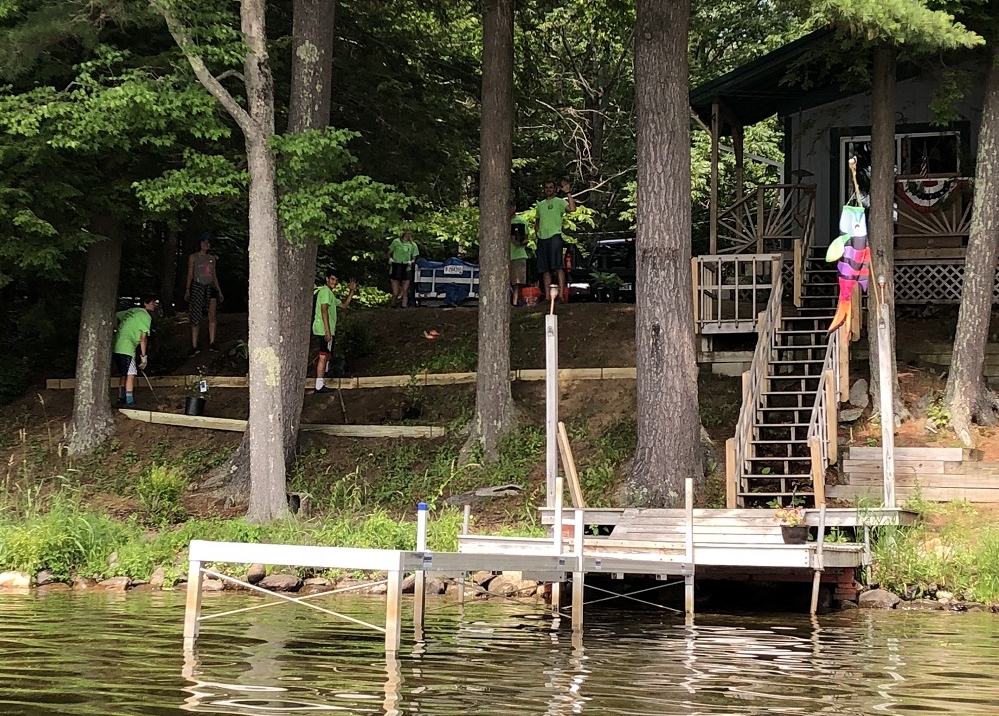


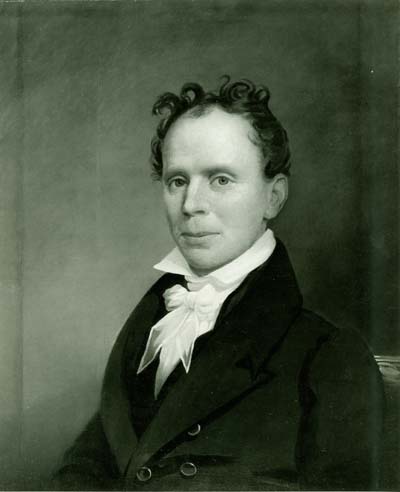


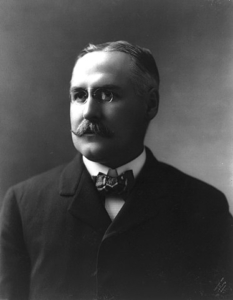
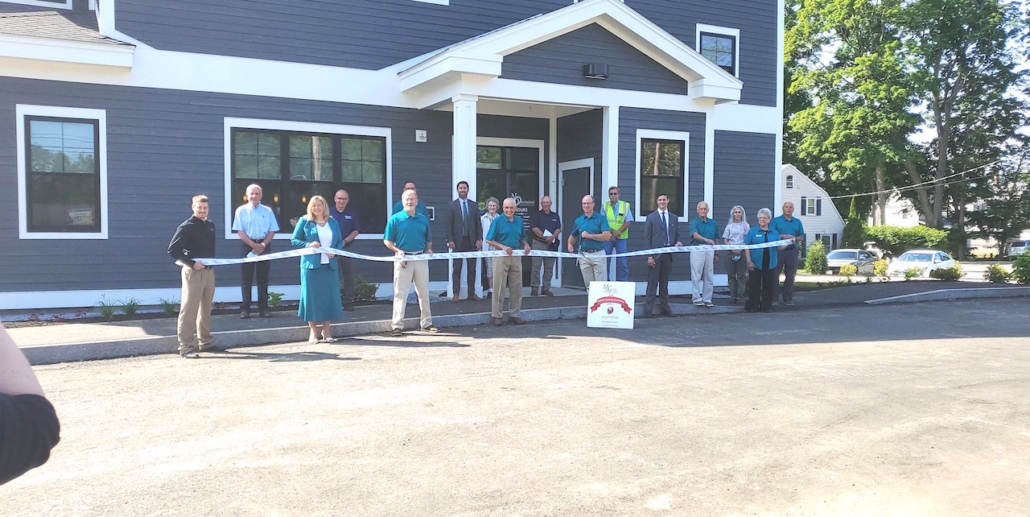

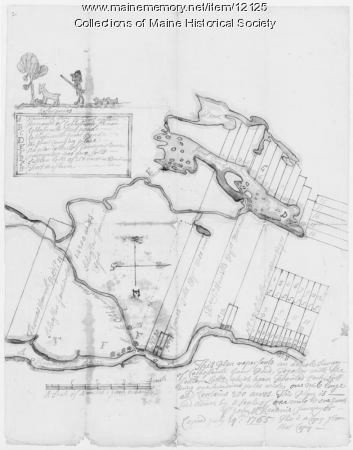
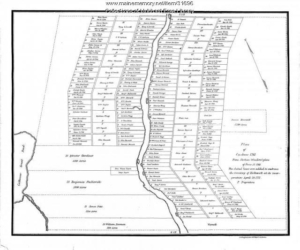
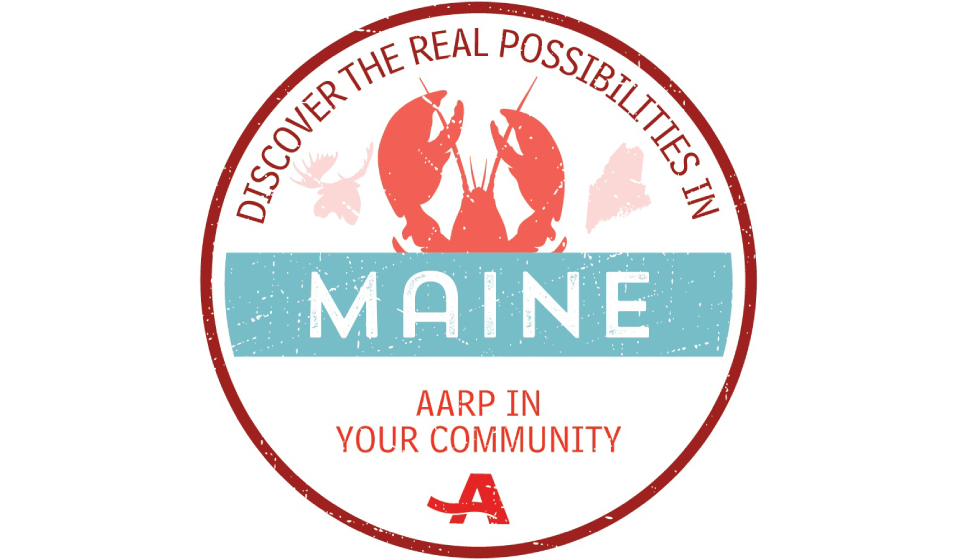

 AARP Foundation Tax-Aide, the nation’s largest free, volunteer-based tax preparation and assistance service, has announced that State of Maine AARP Foundation Tax-Aide sites will not re-open in 2020.
AARP Foundation Tax-Aide, the nation’s largest free, volunteer-based tax preparation and assistance service, has announced that State of Maine AARP Foundation Tax-Aide sites will not re-open in 2020. Carrabec High School
Carrabec High School Emily Avery, Hunter Avery, Cassidy Ayotte, Anthony Berube, Isaac Boucher, Annika Carey, Ashley Cates, Summer Cole, Jacob Copeland, Caitlin Crawford, Shay Cyrway, Caroline Decker, Dominic Falk, Olivia Fortier, Joshua Foss, Paige Giroux, Olivia Gonio, Ricky Gordon, Ariel Guinn, Olivia Hassell, David Houle, Cheyanne Howard, Madison Jaros, Lemuel Kimball, Dylan Leach, Riley Maheu, Scott Mason, Mabel Mouland, Mary-Jenna Oliver, Colby Paquette, Kira Parent, Roy Pierce, Jasmyne Pray, Elijah Quimby, Abby Richardson, Damon Rogers, Cheyenne Sirois, Jayme Stafford, Sydney Steward, Cheyeanne Stubbs, Brandi Thibodeau, Ebony Walls, Dalton Way, Skye Welch, Jesiah Wilcox-Quimby, and Cameron Wooster.
Emily Avery, Hunter Avery, Cassidy Ayotte, Anthony Berube, Isaac Boucher, Annika Carey, Ashley Cates, Summer Cole, Jacob Copeland, Caitlin Crawford, Shay Cyrway, Caroline Decker, Dominic Falk, Olivia Fortier, Joshua Foss, Paige Giroux, Olivia Gonio, Ricky Gordon, Ariel Guinn, Olivia Hassell, David Houle, Cheyanne Howard, Madison Jaros, Lemuel Kimball, Dylan Leach, Riley Maheu, Scott Mason, Mabel Mouland, Mary-Jenna Oliver, Colby Paquette, Kira Parent, Roy Pierce, Jasmyne Pray, Elijah Quimby, Abby Richardson, Damon Rogers, Cheyenne Sirois, Jayme Stafford, Sydney Steward, Cheyeanne Stubbs, Brandi Thibodeau, Ebony Walls, Dalton Way, Skye Welch, Jesiah Wilcox-Quimby, and Cameron Wooster. Alimira Abdullah, Zina Ahmad, Nada Al Hoshan, Mohammad Al Jendi, Peter Allen, Hadeel Alsaleh, Abdulmajeed Al-Tameemi, Dakota Andow, Marian Arthur, Ashleigh Audet, Alexander Audette, David Barley, Sebastian Barron, Federico Barzasi, Hannah Beeckel, Gage Bernstein, Katherine Boston, Jordan Brooke, Jillian Brown, Logan Butler, Gabriella Campbell, Kaaleb Carey, Tyler Carr, Alexis Carter, Haylee Casey, Salemn Chapman, Paige Coaty-Neff, Sarah Cook-Wheeler, Riley Coombe, Jillian Coull, Joshua Crocker, Kaylee Cushing, Calvin Dacus, Jasmine Daly, Dakota Dearborn, Kody Demerchant, Isaiah Dodge, Anthony Donnarumma, Emily Douglas, Molly Dutil, Thomas Farris-Chason, Chloe Fleck, Jasmine French, Evan Galego, Jada Genest, Ian Gervais, Isaac Gichel-Curtis, Leighton Gidney, Ian Gifford, Crystal Gilber, Elsie Gin, Ashton Glockler, Kiara Gonzalez-Rodriguez, Megan Greaton, Cecilia Guadalupi, Jessica Guerrette, Mouaoeih Halwah, Ian Harden, Linda Hodgkins, Wyeth Houle, Emily Houston, Justin Huntley, Nathaniel Ieng, Timothy Johnson, Stephen Labbe, Benjamin LaPierre, Sophia LaPointe, Adrian Larrabee, Ryan Lathe, Faith Leathers-Pouliot, Cameran Letendre, Aaron Lettre, Carly Lettre, Emma Levesque, Meredith Lewis, Willow Longeree, Caleb MacFarland, Roger Mackbach, Joshua Martin, Iain McCollett, Lucas McCormick, Simon McCormick, Caleb McDougal, Courtney McFarland, Audrey McLaughlin, Samantha Melland, Abigail Merrill, Kameron Michaud, Gerald Moody, Caroline Mosca, Josephine Nutakki, Collin Osborne, Ayanna Osman, Renee Ouellette, Micayla Paquette, Marissa Parker, Abigail Pelletier, Nhasino Phan, Jillian Pion, Storm Plummer, Myles Quirion, Shakeera Radel, Ashleigh Redmond, Miranda Reichard, Mickayla Rheimer, Madison Riggs, Nathan Rivera Ayala, Jordan Robertson, Alexander Robinson, Natalie Rohman, Hannah Rouleau, Rebecca Smart, Aidan Smith, Karittha Sopasiri, Nathan Surette, Christopher Taylor, Devon Thomas, Kaley Trask, Mallory Turgeon, James Van Doren-Wilson, Sabrinna Vawter, Atlantis Veilleux, Jessy Veilleux, Linelys Velazquez, Arianna Vinal, Yasmine Wadleigh, Isaac Wallace, Proscha Ware, Nicholas Waterhouse, Haley Weston, Julie White, Sophia Whitney, Zachary Whitney, Joshua Wroten, Ayden Wyman and Devin Young.
Alimira Abdullah, Zina Ahmad, Nada Al Hoshan, Mohammad Al Jendi, Peter Allen, Hadeel Alsaleh, Abdulmajeed Al-Tameemi, Dakota Andow, Marian Arthur, Ashleigh Audet, Alexander Audette, David Barley, Sebastian Barron, Federico Barzasi, Hannah Beeckel, Gage Bernstein, Katherine Boston, Jordan Brooke, Jillian Brown, Logan Butler, Gabriella Campbell, Kaaleb Carey, Tyler Carr, Alexis Carter, Haylee Casey, Salemn Chapman, Paige Coaty-Neff, Sarah Cook-Wheeler, Riley Coombe, Jillian Coull, Joshua Crocker, Kaylee Cushing, Calvin Dacus, Jasmine Daly, Dakota Dearborn, Kody Demerchant, Isaiah Dodge, Anthony Donnarumma, Emily Douglas, Molly Dutil, Thomas Farris-Chason, Chloe Fleck, Jasmine French, Evan Galego, Jada Genest, Ian Gervais, Isaac Gichel-Curtis, Leighton Gidney, Ian Gifford, Crystal Gilber, Elsie Gin, Ashton Glockler, Kiara Gonzalez-Rodriguez, Megan Greaton, Cecilia Guadalupi, Jessica Guerrette, Mouaoeih Halwah, Ian Harden, Linda Hodgkins, Wyeth Houle, Emily Houston, Justin Huntley, Nathaniel Ieng, Timothy Johnson, Stephen Labbe, Benjamin LaPierre, Sophia LaPointe, Adrian Larrabee, Ryan Lathe, Faith Leathers-Pouliot, Cameran Letendre, Aaron Lettre, Carly Lettre, Emma Levesque, Meredith Lewis, Willow Longeree, Caleb MacFarland, Roger Mackbach, Joshua Martin, Iain McCollett, Lucas McCormick, Simon McCormick, Caleb McDougal, Courtney McFarland, Audrey McLaughlin, Samantha Melland, Abigail Merrill, Kameron Michaud, Gerald Moody, Caroline Mosca, Josephine Nutakki, Collin Osborne, Ayanna Osman, Renee Ouellette, Micayla Paquette, Marissa Parker, Abigail Pelletier, Nhasino Phan, Jillian Pion, Storm Plummer, Myles Quirion, Shakeera Radel, Ashleigh Redmond, Miranda Reichard, Mickayla Rheimer, Madison Riggs, Nathan Rivera Ayala, Jordan Robertson, Alexander Robinson, Natalie Rohman, Hannah Rouleau, Rebecca Smart, Aidan Smith, Karittha Sopasiri, Nathan Surette, Christopher Taylor, Devon Thomas, Kaley Trask, Mallory Turgeon, James Van Doren-Wilson, Sabrinna Vawter, Atlantis Veilleux, Jessy Veilleux, Linelys Velazquez, Arianna Vinal, Yasmine Wadleigh, Isaac Wallace, Proscha Ware, Nicholas Waterhouse, Haley Weston, Julie White, Sophia Whitney, Zachary Whitney, Joshua Wroten, Ayden Wyman and Devin Young. Pedro Albarracin Nunez- Mera, Lucy Allen, Lucas Anderson, Jay Austin II, Alec Baker, Julia Basham, Derek Beaulieu, James Berto, Adam Bonenfant, Faith Bonnell, Zyashia Borrero, Ashlee Bossie, Yanic Boulet, Haley Breton, Alexander Buzzell, Kole-Tai Carlezon, Jacob Cater, David Chubbuck Jr, Bridget Connolly, Abigail Cordts, Samantha Couture, Summer Curran, Colby Cyr, Norah Davidson, Sean Decker, Dominic Denico, Lily DeRaps, Joshua Donahue II, Joshua Duggan, Michael Dusoe Jr, Dominick Dyer, Jacob Elsemore, Vincent Emery, Nathan Evans, Cheyann Field, Jasmine Fletcher, Jada Fredette, Mitchell Gamage, Alyssha Gil, Annika Gil, Lydia Gilman, Ella Giroux, Boe Glidden, Bryce Goff, Joshua Gower, Clara Grady, Tori Grasse, Ian Gundberg, Alyssa Hale, Emma Harvey, Nicholas Hayden, Jesse Hayes, Gage Henderson, Brayden Hill, Summer Hotham, Nicholas Howard, Julianna Hubbard, Ashley Huntley, Emily Jacques, Sarah Jarosz, Ricker Jean, Cameron Johnson, Colby Johnson, Kyle Jones, Luke Jordan, Zaria Kelly, Marisa Klemanski, Tristan Klemanski, Riley Kunesh, Brandon LaChance, Benjamin Lagasse, Benjamin Lavoie, Cole Leclerc, Eleena Lee, William Leeman, Desiree Leighton, Madison Leonard, Gabriel Lewis, Stephanie Libby, Jordan Linscott, Colby Loden, Sydney Lord, Brandon Loveland, Shawn Manning, William Mayberry II, Haymanot Maynard, Reece McGlew, Marissa McGraw, Lexigrace Melanson, Kaytie Millay, Grady Miller, Jakob Mills, Jamara Moore, Adalaide Morris, Krysta Morris, Nathaniel Mosher, Alecia Paradis, Joseph Peaslee Jr, Shelley Peaslee, Isaak Peavey, Chloe Peebles, Chandler Peele, Lyndsie Pelotte, Matthew Picher, Jareth Pierpont, Jasmine Plugge, Hunter Praul, Dalton Pushard, Miina Raag-Schmidt, Benjamin Reed, Hailei-Ann Reny, Jennifer Reny, Mitchel Reynolds, Andrew Robinson, Dominic Rodrigue, Michael Rogers, Katelyn Rollins, Alyssa Savage, Shawn Seigars, Serena Sepulvado, Santasia Sevigny, Nicholas Shelton, Danielle Shorey, Taylor Shute, Ryan Sidelinger, Alissa Sleeper, Kayla Sleeper, Dominic Smith, Samuel Smith, Lily Solorzano, Makenzi Strout, Matthew Stultz, James Sugden, Jacob Sutter, Audrey Swan, Nicole Taylor, Kobe Thomas, Courtney Tibbetts, Brandon Tibbs, Katelyn Tibbs, Kaitlyn Tims, Ashleigh Treannie, Hailee Turner, Cameron Tyler, Tanner Watson, Andrew Weymouth, Curtis Weymouth, Kayleigh Winam, Richard Winn, Wesley Wood and Amber Wysocki.
Pedro Albarracin Nunez- Mera, Lucy Allen, Lucas Anderson, Jay Austin II, Alec Baker, Julia Basham, Derek Beaulieu, James Berto, Adam Bonenfant, Faith Bonnell, Zyashia Borrero, Ashlee Bossie, Yanic Boulet, Haley Breton, Alexander Buzzell, Kole-Tai Carlezon, Jacob Cater, David Chubbuck Jr, Bridget Connolly, Abigail Cordts, Samantha Couture, Summer Curran, Colby Cyr, Norah Davidson, Sean Decker, Dominic Denico, Lily DeRaps, Joshua Donahue II, Joshua Duggan, Michael Dusoe Jr, Dominick Dyer, Jacob Elsemore, Vincent Emery, Nathan Evans, Cheyann Field, Jasmine Fletcher, Jada Fredette, Mitchell Gamage, Alyssha Gil, Annika Gil, Lydia Gilman, Ella Giroux, Boe Glidden, Bryce Goff, Joshua Gower, Clara Grady, Tori Grasse, Ian Gundberg, Alyssa Hale, Emma Harvey, Nicholas Hayden, Jesse Hayes, Gage Henderson, Brayden Hill, Summer Hotham, Nicholas Howard, Julianna Hubbard, Ashley Huntley, Emily Jacques, Sarah Jarosz, Ricker Jean, Cameron Johnson, Colby Johnson, Kyle Jones, Luke Jordan, Zaria Kelly, Marisa Klemanski, Tristan Klemanski, Riley Kunesh, Brandon LaChance, Benjamin Lagasse, Benjamin Lavoie, Cole Leclerc, Eleena Lee, William Leeman, Desiree Leighton, Madison Leonard, Gabriel Lewis, Stephanie Libby, Jordan Linscott, Colby Loden, Sydney Lord, Brandon Loveland, Shawn Manning, William Mayberry II, Haymanot Maynard, Reece McGlew, Marissa McGraw, Lexigrace Melanson, Kaytie Millay, Grady Miller, Jakob Mills, Jamara Moore, Adalaide Morris, Krysta Morris, Nathaniel Mosher, Alecia Paradis, Joseph Peaslee Jr, Shelley Peaslee, Isaak Peavey, Chloe Peebles, Chandler Peele, Lyndsie Pelotte, Matthew Picher, Jareth Pierpont, Jasmine Plugge, Hunter Praul, Dalton Pushard, Miina Raag-Schmidt, Benjamin Reed, Hailei-Ann Reny, Jennifer Reny, Mitchel Reynolds, Andrew Robinson, Dominic Rodrigue, Michael Rogers, Katelyn Rollins, Alyssa Savage, Shawn Seigars, Serena Sepulvado, Santasia Sevigny, Nicholas Shelton, Danielle Shorey, Taylor Shute, Ryan Sidelinger, Alissa Sleeper, Kayla Sleeper, Dominic Smith, Samuel Smith, Lily Solorzano, Makenzi Strout, Matthew Stultz, James Sugden, Jacob Sutter, Audrey Swan, Nicole Taylor, Kobe Thomas, Courtney Tibbetts, Brandon Tibbs, Katelyn Tibbs, Kaitlyn Tims, Ashleigh Treannie, Hailee Turner, Cameron Tyler, Tanner Watson, Andrew Weymouth, Curtis Weymouth, Kayleigh Winam, Richard Winn, Wesley Wood and Amber Wysocki. Ashley Allen, Mackenzie Allen, Raygen Alley, Colby Anderson, Alexis Armstrong, Riley Avery, Lindsay Bagley, Dakota Batchelder, Wyatt Belmont, Mathew Berry, Rilee Bessey, Brody Bickford, Nathan Bickford, Hannah Bilodeau, Hailey Bolduc, Tyler Bolduc, Alan Bourget, Colby Brann, Aaron Breton, Sydney Bridger, Eva Brisk, Lauren Buck, Brooke Butler, Ethan Caldwell, Kendra Campbell, Deleyni Carr, Madison Carrero, Journey Champagne, Abigail Charland, Alfred Cochrane, Ethan Cochrane, Samuel Coro, Evan Craig, Megan Curtis, Cody Dixon, Parker Doane, Dylan Donnell, Bryson Dostie, Dawson Drew, Victoria Dubay, Dylan Eldridge, Annabelle Emery, Abigail Fisher, Wyatt Fortin, Samantha Fuller, Victoria Fye, Kieara Garland, Skylah Grivois, Paige Hale, Tyler Hall, Harley Hamlin, Jacob Hamlin, Ricky Hamlion, Dylan Hardenburg, Alaina Haywood, Caitlin Hedman, Carson Jersey, Haley Hersey, Alaina Hood, Silvia Hoover, Sophia Hoover, Mackenzie Huard, Sumner Hubbard, Jeremiah Hunter, Kristin Jackson, Camron Jordan, Donovan Knapik, Miranda Lambert, Julie Lane, Kyle Languet, Storm Lavway, Nicholas Lawler, Allison Leary, Grace Leary, Tyler LeClair, Austin Leighton, Aubrey Levesque, Alexis Lewis, Erica Maillet, John Manzo, Cassandra Martin, Dylan Martin-Hachey, Joshua McFarland, Joseph McKinley, Kristin Morneau, Paul Morneau, Destiny Mulholland, Morgan Niles, Cassandra Noyes, Bailey Parlin, Jacob Patterson, Benjamin Pierce, Gabrielle Pierce, Isaac Plourde, Cheyenne Poulin, Benjamen Pressey, Brian Pressey, Kassey Pressey, Chase Quimby, Nathaniel Regalado, Brianna Rice, Mackenzie Roberts, Gain Robinson, Mary Robinson, Lydia Rogers, Hunter Roy, Michael Roy, Tucker Roy, Jacob Ryder, Emma Salisbury, Ranea Sapienza, Hailey Sargent, Colby Shorey, Isaish Shuman, Riley Sinclair, Breanna Sirois, Melaina Smith, Paul Southwick, Jayden Stephenson, Elsie Suttie, Jacob Suttie, David Thurlow, Abigail Towne, Lydia Townsend, Haley Trahan, Jacob Turlo, Cody Veilleux, Abbie Vigue, Kyle Walch, Amber Wescott, Savannah Weston, Liberty White, Emily Whitney, Haley Wilkie, Cassondra Wood and Gabriel York.
Ashley Allen, Mackenzie Allen, Raygen Alley, Colby Anderson, Alexis Armstrong, Riley Avery, Lindsay Bagley, Dakota Batchelder, Wyatt Belmont, Mathew Berry, Rilee Bessey, Brody Bickford, Nathan Bickford, Hannah Bilodeau, Hailey Bolduc, Tyler Bolduc, Alan Bourget, Colby Brann, Aaron Breton, Sydney Bridger, Eva Brisk, Lauren Buck, Brooke Butler, Ethan Caldwell, Kendra Campbell, Deleyni Carr, Madison Carrero, Journey Champagne, Abigail Charland, Alfred Cochrane, Ethan Cochrane, Samuel Coro, Evan Craig, Megan Curtis, Cody Dixon, Parker Doane, Dylan Donnell, Bryson Dostie, Dawson Drew, Victoria Dubay, Dylan Eldridge, Annabelle Emery, Abigail Fisher, Wyatt Fortin, Samantha Fuller, Victoria Fye, Kieara Garland, Skylah Grivois, Paige Hale, Tyler Hall, Harley Hamlin, Jacob Hamlin, Ricky Hamlion, Dylan Hardenburg, Alaina Haywood, Caitlin Hedman, Carson Jersey, Haley Hersey, Alaina Hood, Silvia Hoover, Sophia Hoover, Mackenzie Huard, Sumner Hubbard, Jeremiah Hunter, Kristin Jackson, Camron Jordan, Donovan Knapik, Miranda Lambert, Julie Lane, Kyle Languet, Storm Lavway, Nicholas Lawler, Allison Leary, Grace Leary, Tyler LeClair, Austin Leighton, Aubrey Levesque, Alexis Lewis, Erica Maillet, John Manzo, Cassandra Martin, Dylan Martin-Hachey, Joshua McFarland, Joseph McKinley, Kristin Morneau, Paul Morneau, Destiny Mulholland, Morgan Niles, Cassandra Noyes, Bailey Parlin, Jacob Patterson, Benjamin Pierce, Gabrielle Pierce, Isaac Plourde, Cheyenne Poulin, Benjamen Pressey, Brian Pressey, Kassey Pressey, Chase Quimby, Nathaniel Regalado, Brianna Rice, Mackenzie Roberts, Gain Robinson, Mary Robinson, Lydia Rogers, Hunter Roy, Michael Roy, Tucker Roy, Jacob Ryder, Emma Salisbury, Ranea Sapienza, Hailey Sargent, Colby Shorey, Isaish Shuman, Riley Sinclair, Breanna Sirois, Melaina Smith, Paul Southwick, Jayden Stephenson, Elsie Suttie, Jacob Suttie, David Thurlow, Abigail Towne, Lydia Townsend, Haley Trahan, Jacob Turlo, Cody Veilleux, Abbie Vigue, Kyle Walch, Amber Wescott, Savannah Weston, Liberty White, Emily Whitney, Haley Wilkie, Cassondra Wood and Gabriel York. Chance Allen, Katrina Barney, Shelby Belanger, Graham Briggs, Nevaeh Burnham, Reid Campbell, Autumn Cates, Olivia Clough, Aaron Corson, Caleb Cowan, Isaiah Cyr, Stacy Depoala, Dawson Eanes, Emily Edgerly, Todd Edgerly, Caden Franzose, Aliya French, Dakota Hall, Glen Harrington IV, Chandra Holt, Lauria LeBlanc, Grace Linkletter, Carolyn McGray, Riley Merrill, Cianan Morris, Aidan O’Donnell, Izaiah Perkins, Lucy Perkins, Luke Perkins, Isabella Petrey, Roger Picard, Roland Picard, Evelyn Pisch, Skyelar Pollis, LeiLani Rexford, Abigail Spaulding, Jared Tozier, Mikayla Violet and Daxton Winchester and Kathryn Worthen.
Chance Allen, Katrina Barney, Shelby Belanger, Graham Briggs, Nevaeh Burnham, Reid Campbell, Autumn Cates, Olivia Clough, Aaron Corson, Caleb Cowan, Isaiah Cyr, Stacy Depoala, Dawson Eanes, Emily Edgerly, Todd Edgerly, Caden Franzose, Aliya French, Dakota Hall, Glen Harrington IV, Chandra Holt, Lauria LeBlanc, Grace Linkletter, Carolyn McGray, Riley Merrill, Cianan Morris, Aidan O’Donnell, Izaiah Perkins, Lucy Perkins, Luke Perkins, Isabella Petrey, Roger Picard, Roland Picard, Evelyn Pisch, Skyelar Pollis, LeiLani Rexford, Abigail Spaulding, Jared Tozier, Mikayla Violet and Daxton Winchester and Kathryn Worthen. Alyson Albert, Nicholas Alexander, Connor Alley, Ava Ardito, Austin Arsenault, Abigayle Barney, Jennessey B aylis, Madison Beaulieu, Austin Bedsaul, Sami Benayad, Brianne Benecke, Taylor Bernier, Lauren Bourque, Rebecca Bourque, Lydia Bradfield, Andrew Brann, Sydney Brenda, Alexa Brennan, Ethan Burton, Hannah Butler, Salvatore Caccamo, Kaiya Charles, Tucker Charles, Patrick Chisum, Sadie Colby, William Cole, Connor Collins, Emma Concaugh, Bradley Condon, Abitail Corbett, Anne Corbett, Breanna Corbin, Ainsley Corson, Shiela Corson, Hunter Cote, Cameron Croft, Emily Crowell, Hannah Cummins, Dylan Cunningham, Lydia D’Amico, Austin Damren, Zachary Davis, Cassidy Day, Hannah DelGiudice, Jordan Devine, Kristen Dexter, Emma Di-Girolamo, Zachary DiPietro, TaylorJefferey Doone, Cooper Doucette, Haley Dunn, Benjamin Edman, Cade Ennis, Connor Evans, Andrew Everett, Nicolas Fontaine, Lauren Fortin, Joseph Fougere, Brennan Francis, Alexis Furbush, Amelia Gallagher, Austin Garrett, Sydnie Gay, Sara Getchell, Molly Glueck, Joshua Goff, Martin Guarnieri, Juliana Gudaitis, Jayde Gurney, Gavin Haines, Danielle Hall, Benjamin Hellen, Shelby Hoffman, Toni Holz, Maxwell Hopper, Travis Hosea, Gage Hughes, Elizabeth Hume, Alexander Jackson, Madison Jewell, Maya Johnston, Lucas Jolin, Shane Kauppinen, Gregor Keimel, Christopher King, Kody King, Nathan Kinney, Dawson Kitchin, Konnor Koroski, Grace Kroeger, Tabitha Lake, Dominique Lamontagne, Chance Languet, Isabelle Languet Joshua Languet, Hanna Lavenson, Jimmy Lemlin, Jayden Lenfestey, Benoit Levesque, Daimian Lewis, Eve Lilly, Addison Littlefield, Sarah Lowell, Sydney Lucas, Caleb Luce, Isabella Luce, Katie Luce, Ashlynn Lund, Christopher Mairs, Jayden Martin, Alyssa Methieu, Samantha Matthews, Mackenzie Mayo, Connor McCurdy, Aislinn McDaniel, Leighara McDaniel, Garrett McKenna, Kassie McMullen, William McPherson, Meghan McQuillan, Dylan Mercier, Nathan Milne, Ella Nash, Andrew Needham, Mattea Ogden, Joselyn Ouellette, Makayla Ouellette, Alexandria Pearce, Kailey Pelletier, Nathan Perkins, Jacob Perry, Rosemary Peterson, Francis Petrillo, Alexnader Pierce, Adam Pooler, Melayna Porter, Nathalie Poulin, Rylee Poulin, Brian Powell, Brian Powell, Colby Prosser, Valerie Quirion, Alysan Rancourt, Joshua Raymond, Kyera Ripley, Kaylee Rocque, Sean Rodrigue, Elijah Ross, Dharani Singaram, Lindsey Sirois, Emily Smith, Hunter Smith, Makenzie Smith, Taylor Staples, Hart St. Clair, Damian Taylor, Victoria Terranova, Richard Thompson, Deklan Thurston, Chloe Tilley, Eliza Towle, Sydney Townsend, Casey Turner, Brandon Veilleux, Jade Veilleux, Maria Veilleux, Matthew Veilleux, Kaitlyn Vigue, Carter Violette, Isaac Violette, Makayla Violette, Mason Violette, Aran Walker, Keith Warman, Elizabeth Webb, Gabrielle Wener, William Wentworth, Rebekah White, Mary-Jane Williams, Kaley Wolman and Joshua Zinkovitch.
Alyson Albert, Nicholas Alexander, Connor Alley, Ava Ardito, Austin Arsenault, Abigayle Barney, Jennessey B aylis, Madison Beaulieu, Austin Bedsaul, Sami Benayad, Brianne Benecke, Taylor Bernier, Lauren Bourque, Rebecca Bourque, Lydia Bradfield, Andrew Brann, Sydney Brenda, Alexa Brennan, Ethan Burton, Hannah Butler, Salvatore Caccamo, Kaiya Charles, Tucker Charles, Patrick Chisum, Sadie Colby, William Cole, Connor Collins, Emma Concaugh, Bradley Condon, Abitail Corbett, Anne Corbett, Breanna Corbin, Ainsley Corson, Shiela Corson, Hunter Cote, Cameron Croft, Emily Crowell, Hannah Cummins, Dylan Cunningham, Lydia D’Amico, Austin Damren, Zachary Davis, Cassidy Day, Hannah DelGiudice, Jordan Devine, Kristen Dexter, Emma Di-Girolamo, Zachary DiPietro, TaylorJefferey Doone, Cooper Doucette, Haley Dunn, Benjamin Edman, Cade Ennis, Connor Evans, Andrew Everett, Nicolas Fontaine, Lauren Fortin, Joseph Fougere, Brennan Francis, Alexis Furbush, Amelia Gallagher, Austin Garrett, Sydnie Gay, Sara Getchell, Molly Glueck, Joshua Goff, Martin Guarnieri, Juliana Gudaitis, Jayde Gurney, Gavin Haines, Danielle Hall, Benjamin Hellen, Shelby Hoffman, Toni Holz, Maxwell Hopper, Travis Hosea, Gage Hughes, Elizabeth Hume, Alexander Jackson, Madison Jewell, Maya Johnston, Lucas Jolin, Shane Kauppinen, Gregor Keimel, Christopher King, Kody King, Nathan Kinney, Dawson Kitchin, Konnor Koroski, Grace Kroeger, Tabitha Lake, Dominique Lamontagne, Chance Languet, Isabelle Languet Joshua Languet, Hanna Lavenson, Jimmy Lemlin, Jayden Lenfestey, Benoit Levesque, Daimian Lewis, Eve Lilly, Addison Littlefield, Sarah Lowell, Sydney Lucas, Caleb Luce, Isabella Luce, Katie Luce, Ashlynn Lund, Christopher Mairs, Jayden Martin, Alyssa Methieu, Samantha Matthews, Mackenzie Mayo, Connor McCurdy, Aislinn McDaniel, Leighara McDaniel, Garrett McKenna, Kassie McMullen, William McPherson, Meghan McQuillan, Dylan Mercier, Nathan Milne, Ella Nash, Andrew Needham, Mattea Ogden, Joselyn Ouellette, Makayla Ouellette, Alexandria Pearce, Kailey Pelletier, Nathan Perkins, Jacob Perry, Rosemary Peterson, Francis Petrillo, Alexnader Pierce, Adam Pooler, Melayna Porter, Nathalie Poulin, Rylee Poulin, Brian Powell, Brian Powell, Colby Prosser, Valerie Quirion, Alysan Rancourt, Joshua Raymond, Kyera Ripley, Kaylee Rocque, Sean Rodrigue, Elijah Ross, Dharani Singaram, Lindsey Sirois, Emily Smith, Hunter Smith, Makenzie Smith, Taylor Staples, Hart St. Clair, Damian Taylor, Victoria Terranova, Richard Thompson, Deklan Thurston, Chloe Tilley, Eliza Towle, Sydney Townsend, Casey Turner, Brandon Veilleux, Jade Veilleux, Maria Veilleux, Matthew Veilleux, Kaitlyn Vigue, Carter Violette, Isaac Violette, Makayla Violette, Mason Violette, Aran Walker, Keith Warman, Elizabeth Webb, Gabrielle Wener, William Wentworth, Rebekah White, Mary-Jane Williams, Kaley Wolman and Joshua Zinkovitch. Halah Al Subaihawi, Devin Andreozzi, Trent Andreozzi, Emilee Arbo, Maryah Audet-Gagnon, Estaphanie Baez Vazquez, Jess Bazakas, Jacqueline Bean, Timara Bell, Kristen Bickford, Taylor Bielecki, Abigail Bloom, Hallee Brunette, Bryn Burrows, Elizabeth Campbell, Damien Carey, Amaryllis Charles, Katie Chase, Kevin Chen, Hope Cogswell, Jacob Cornforth, Logan Courtois, Remy Courtois, Mickayla Crowley, Maggie Didonato, Hannah Dillingham, Gavin Dorr, Duncan Doyon, Keegan Drake, Lauren Endicott, Jaimee Feugill, Sadie Garling, Daniel Gaunce, Chloe Geller, Trafton Gilbert, Ryan Gilman, Devin Goldsmith, Benjamin Combos, Emma Goodrich, Sierra Grant, Joseph Gray, Cierra Guarente, Jacob Gerrerro, Kylee Hamm, Madison Hanley, Alexis Hawkins, Shantylane Hubiak, Keona Jeror, Miranda Juliano, Madaya Kavis, Sadie Labbe, Ethan Ladd, Peter Lai, Michael LeClair, Jordan Lesiker, Dakota Libby, Jasmine Liberty, Emelaine Llanto, Hannah Lord, Olivia Lovendahl, Joseph Macarthur, Rebecca Maheu, Christopher Manigat, Madeleine Martin, Shane Martin, Isaac McCarthy, D’Nell McDonald, Maxwell McGadney, Zaharias Menoudarakos, Luquis Merrithew, Alana Monk, Mckayla Nelson, Flesha Paradis, Jelani Parker, Lauren Pinnette, Sophia Poole, Katlin Prat, Barry Preble, Nikkia-Lynn Pressey, Colby Quinlan, David Ramgren, Dasia Roberts, Corinne Rogers, Lily Roy, Kira Sencabaugh, Amanda Shirley, Anthony Singh, Jared Sioch, Keisha Small, Simon Smith, Isabella Sousa, Joey Stanton Jr., Alisha Stevens, Catherine Tracy, Brady Vicnaire, Natalia Von Leigh, Cole Welch, Wayne Williams, Alysia Wilson, Erin Winkley and Cairlyn Young.
Halah Al Subaihawi, Devin Andreozzi, Trent Andreozzi, Emilee Arbo, Maryah Audet-Gagnon, Estaphanie Baez Vazquez, Jess Bazakas, Jacqueline Bean, Timara Bell, Kristen Bickford, Taylor Bielecki, Abigail Bloom, Hallee Brunette, Bryn Burrows, Elizabeth Campbell, Damien Carey, Amaryllis Charles, Katie Chase, Kevin Chen, Hope Cogswell, Jacob Cornforth, Logan Courtois, Remy Courtois, Mickayla Crowley, Maggie Didonato, Hannah Dillingham, Gavin Dorr, Duncan Doyon, Keegan Drake, Lauren Endicott, Jaimee Feugill, Sadie Garling, Daniel Gaunce, Chloe Geller, Trafton Gilbert, Ryan Gilman, Devin Goldsmith, Benjamin Combos, Emma Goodrich, Sierra Grant, Joseph Gray, Cierra Guarente, Jacob Gerrerro, Kylee Hamm, Madison Hanley, Alexis Hawkins, Shantylane Hubiak, Keona Jeror, Miranda Juliano, Madaya Kavis, Sadie Labbe, Ethan Ladd, Peter Lai, Michael LeClair, Jordan Lesiker, Dakota Libby, Jasmine Liberty, Emelaine Llanto, Hannah Lord, Olivia Lovendahl, Joseph Macarthur, Rebecca Maheu, Christopher Manigat, Madeleine Martin, Shane Martin, Isaac McCarthy, D’Nell McDonald, Maxwell McGadney, Zaharias Menoudarakos, Luquis Merrithew, Alana Monk, Mckayla Nelson, Flesha Paradis, Jelani Parker, Lauren Pinnette, Sophia Poole, Katlin Prat, Barry Preble, Nikkia-Lynn Pressey, Colby Quinlan, David Ramgren, Dasia Roberts, Corinne Rogers, Lily Roy, Kira Sencabaugh, Amanda Shirley, Anthony Singh, Jared Sioch, Keisha Small, Simon Smith, Isabella Sousa, Joey Stanton Jr., Alisha Stevens, Catherine Tracy, Brady Vicnaire, Natalia Von Leigh, Cole Welch, Wayne Williams, Alysia Wilson, Erin Winkley and Cairlyn Young. Haneen Ali, Carly Anderson, Alika Andrews, Kathryn Bailey, Lily Barkdull, Rylee Batey, Devin Bettencourt, Eric Booth, Sebastian Bouchard, Cameron Brockway, Brandon Campbell, Lydia Carey, Briell Carter, Gabriella Chambers, Garrett Choate, Jessey Cloutier, Silver Clukey, Abigail Cochran, Brooke Cochran, Brady Corson, Camden Dangler, Alexander Demers, Micah Dickson, Willa Dolley, Katie Doughty, Ronan Drummond, Hannah Dugal, Brennan Dunton, Summer Eyster, Cloe Fecteau, Sophie-ann Gerry, Isaiah Gidney, Christopher Girard, Isaiah Goldsmith, Hannah Goodine, Cameron Goodwin, Cody Green, Bryce Gunzinger, Dawsen Gurski, Aaron Harmon, Gabrielle Hatt, Wyatt Hood, Landon Hotham, Jacob Huesers, Ross Hughes, Sadie Irza, Cody Ivey, Savannah Joler, Caleb Joseph Lagasse, Kaelyn Lakey, Juliann Lapierre, Nicholas Lemieux, Felicia Lessard, Alexee Littlefield, Riley Loftus, James Mason, Ronnie Mason, Ethan Matthews, Caleb Mills, Christopher Mills, Brandon Moore, Haylee Moore, Madison Morin, Mariah Morrison, Shaylie Morrison, Gabriel Moumouris, Skylar Nye, Elena O’Hara, Wesley O’Neal, Chase Pelkey, Leah Pelotte, Christopher Phair, Madalyn Phillips, Justice Picard, Faith Pomerleau, Colby Pomeroy, Alexis Porter, Christopher Poulliot, Morgan Presby, Anthony Proulx, Ashley Quirion, Kristen Rancourt, Braden Rayborn, Miranda Raymond, Zachary Real, Jackson Reynolds, Jenna Rodrigue, Taylor Rodriguez, Cheyne Salvas, Nevaeh Schuchardt, Carrie Selwood, Mallory Sheridan, Grace Smith, Austin Soucy, Alison Stabins, Bryanna Stanley, Hannah Stevens, Katherine Stevens, Nicholas Sweeney, Kaleb Thomas, Sage Vance, Gage Vaughan, Austin Veilleux, Abigail Washburn, William Weiss, Caleb Welsh, Austin Williams and Abigail Wright.
Haneen Ali, Carly Anderson, Alika Andrews, Kathryn Bailey, Lily Barkdull, Rylee Batey, Devin Bettencourt, Eric Booth, Sebastian Bouchard, Cameron Brockway, Brandon Campbell, Lydia Carey, Briell Carter, Gabriella Chambers, Garrett Choate, Jessey Cloutier, Silver Clukey, Abigail Cochran, Brooke Cochran, Brady Corson, Camden Dangler, Alexander Demers, Micah Dickson, Willa Dolley, Katie Doughty, Ronan Drummond, Hannah Dugal, Brennan Dunton, Summer Eyster, Cloe Fecteau, Sophie-ann Gerry, Isaiah Gidney, Christopher Girard, Isaiah Goldsmith, Hannah Goodine, Cameron Goodwin, Cody Green, Bryce Gunzinger, Dawsen Gurski, Aaron Harmon, Gabrielle Hatt, Wyatt Hood, Landon Hotham, Jacob Huesers, Ross Hughes, Sadie Irza, Cody Ivey, Savannah Joler, Caleb Joseph Lagasse, Kaelyn Lakey, Juliann Lapierre, Nicholas Lemieux, Felicia Lessard, Alexee Littlefield, Riley Loftus, James Mason, Ronnie Mason, Ethan Matthews, Caleb Mills, Christopher Mills, Brandon Moore, Haylee Moore, Madison Morin, Mariah Morrison, Shaylie Morrison, Gabriel Moumouris, Skylar Nye, Elena O’Hara, Wesley O’Neal, Chase Pelkey, Leah Pelotte, Christopher Phair, Madalyn Phillips, Justice Picard, Faith Pomerleau, Colby Pomeroy, Alexis Porter, Christopher Poulliot, Morgan Presby, Anthony Proulx, Ashley Quirion, Kristen Rancourt, Braden Rayborn, Miranda Raymond, Zachary Real, Jackson Reynolds, Jenna Rodrigue, Taylor Rodriguez, Cheyne Salvas, Nevaeh Schuchardt, Carrie Selwood, Mallory Sheridan, Grace Smith, Austin Soucy, Alison Stabins, Bryanna Stanley, Hannah Stevens, Katherine Stevens, Nicholas Sweeney, Kaleb Thomas, Sage Vance, Gage Vaughan, Austin Veilleux, Abigail Washburn, William Weiss, Caleb Welsh, Austin Williams and Abigail Wright. Most information in this section is from the comprehensive history section of
Most information in this section is from the comprehensive history section of  In response to social distancing requirements and in the interest of public safety and health, the Maine Film Center (MFC) will present the 2020 Maine International Film Festival (MIFF) in a new, modified format. The 23rd annual MIFF will be held July 7–16 with in-person screenings held exclusively at the Skowhegan Drive-In Theater in Skowhegan, Maine. The twenty-third annual celebration of American independent, international, and classic film will showcase nine feature films, comprised largely of World, North American, and East Coast premieres, as well as a program of Maine Shorts. Additional feature and short films will be made available for ticketed online streaming via the festival website,
In response to social distancing requirements and in the interest of public safety and health, the Maine Film Center (MFC) will present the 2020 Maine International Film Festival (MIFF) in a new, modified format. The 23rd annual MIFF will be held July 7–16 with in-person screenings held exclusively at the Skowhegan Drive-In Theater in Skowhegan, Maine. The twenty-third annual celebration of American independent, international, and classic film will showcase nine feature films, comprised largely of World, North American, and East Coast premieres, as well as a program of Maine Shorts. Additional feature and short films will be made available for ticketed online streaming via the festival website,